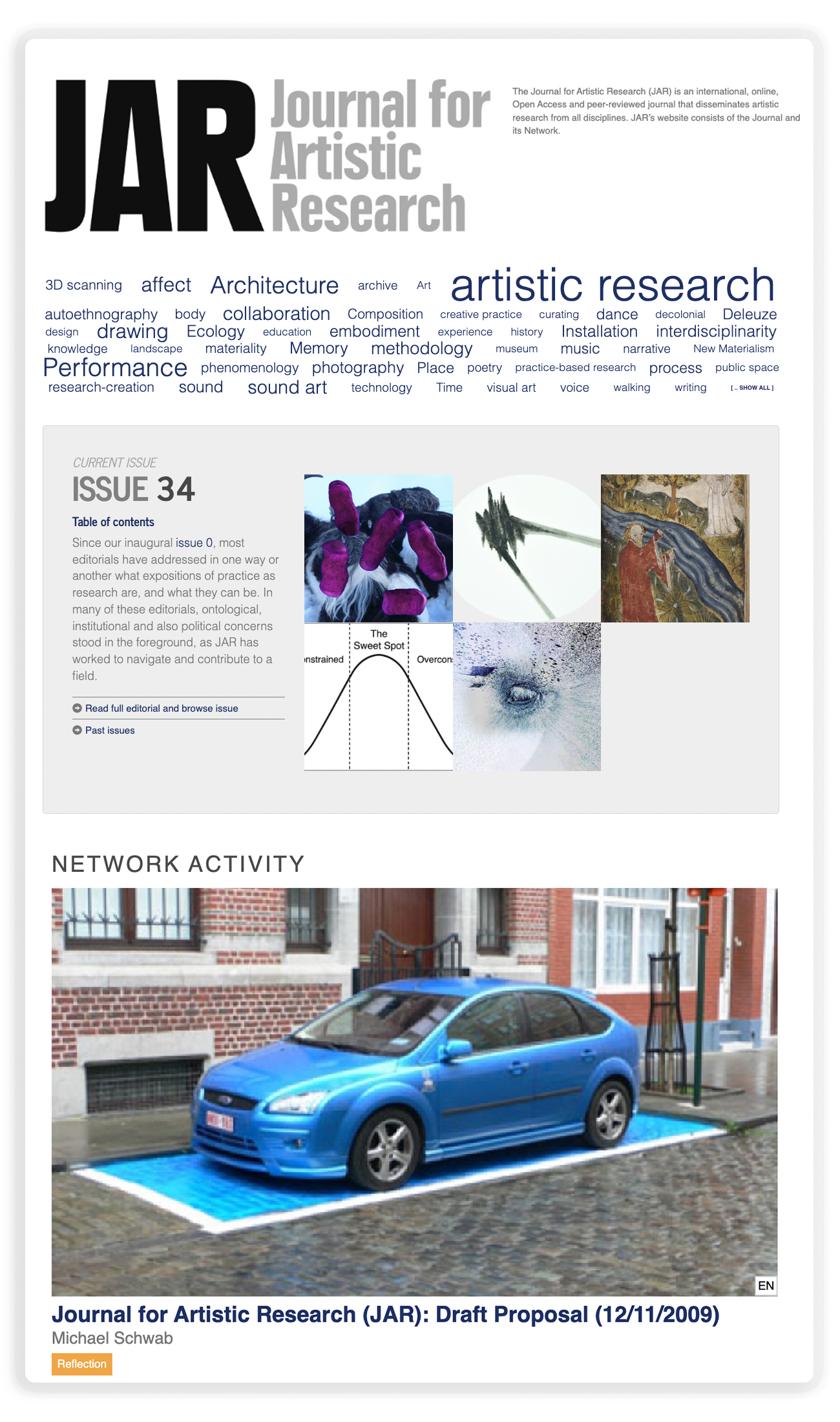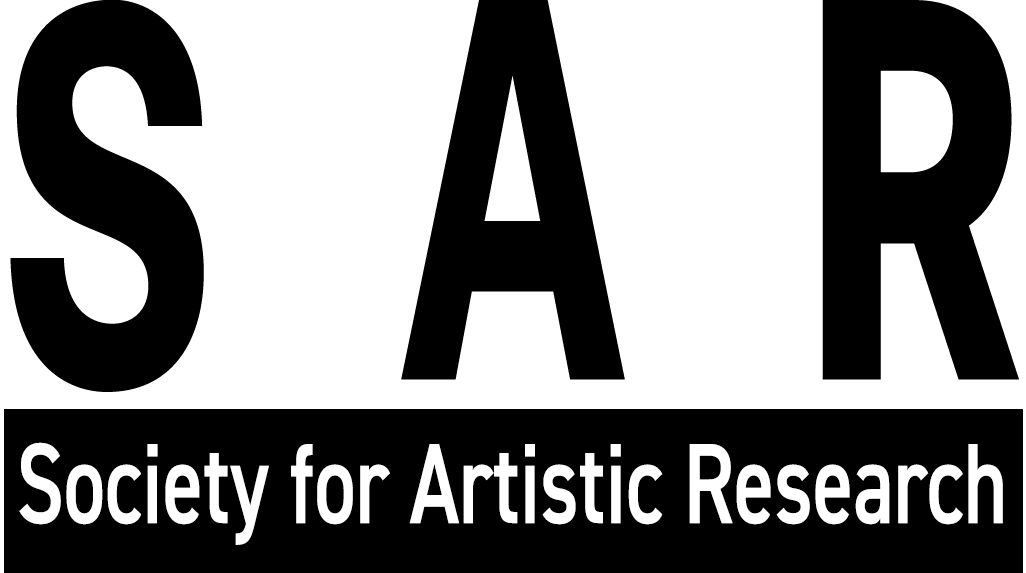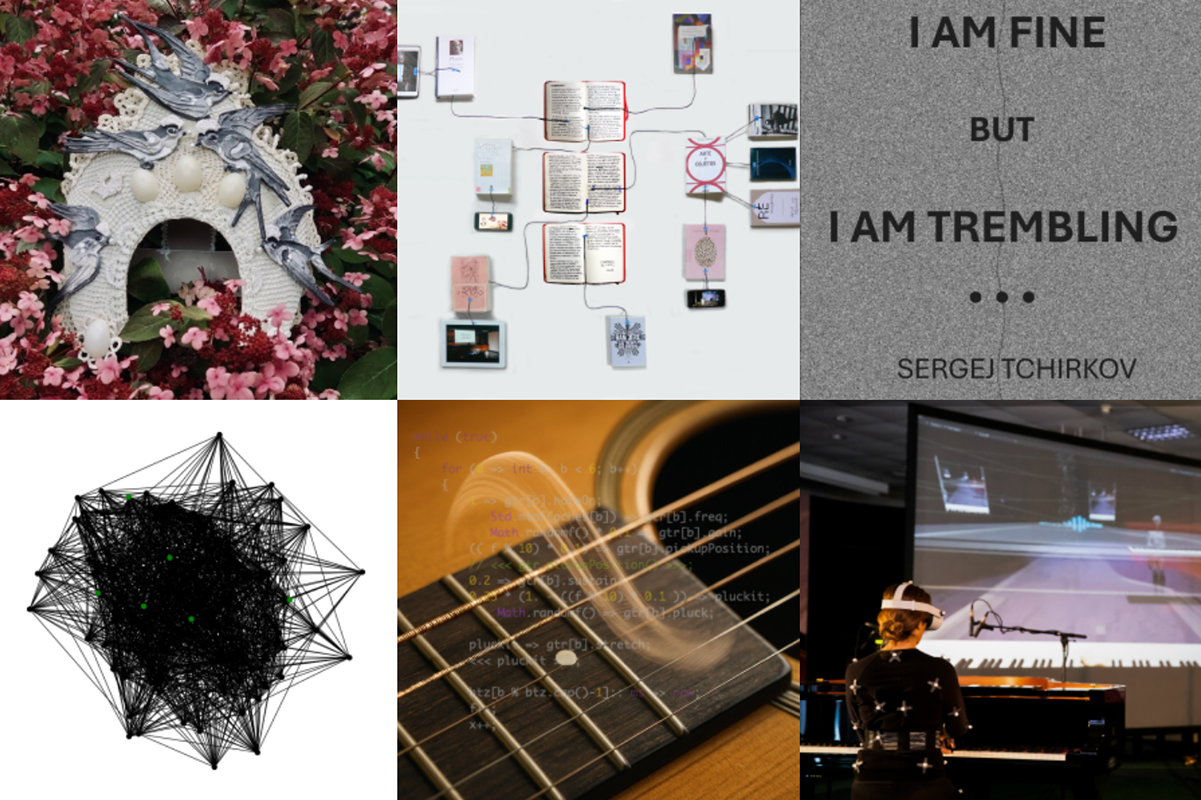The Journal for Artistic Research (JAR)
The Journal for Artistic Research (JAR) is an international, online, Open Access and peer-reviewed journal that disseminates artistic research from all disciplines. JAR invites the ever-increasing number of artistic researchers to develop what for the sciences and humanities are standard academic publication procedures on a digital platform where artistic processes, methods, and outcomes can be shared in a dynamic multimedia format, integrating text, images, audio, and video.

THE JOURNAL
JAR is an international, online, Open Access and peer-reviewed journal run by SAR. It serves as a meeting point of diverse practices and methodologies in a field that has become a worldwide movement with many local activities.
ARTISTIC RESEARCH
Is viewed as a developing field where research and art are positioned as mutually influential. Recognising that the field is ever developing and expanding, JAR remains open to continued re-articulations of its publishing criteria.
PURPOSE
Disseminating artistic research from all disciplines on a digital platform where multiple methods, media and articulations may function together to generate insights in artistic research endeavours.
OPEN CALLS
Annually JAR has three submission deadlines: 31 January, 31 May and the 30 September. All submissions published in the journal are peer-reviewed. JAR invites submissions from all fields and disciplines in which artistic research may be relevant, including areas that are not usually conceived of as artistic.
CURRENT ISSUE
ISSUE 36
This issue presents six expositions that examine themes such as intersectional feminism and collaborations between female folk singers in Finland and Bulgaria, aesthetic speculation, non-hierarchical collaboration in score-based music, reinterpreting musical materials through computational methods, acousmatic electroacoustic composition and a phygital piano duet in the metaverse.
READ JAR ISSUE 36





